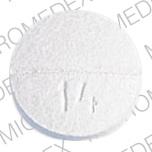Quadrinal Interactions
There are 1032 drugs known to interact with Quadrinal (ephedrine / phenobarbital / potassium iodide / theophylline), along with 31 disease interactions, and 6 alcohol/food interactions. Of the total drug interactions, 327 are major, 663 are moderate, and 42 are minor.
- View all 1032 medications that may interact with Quadrinal
- View Quadrinal alcohol/food interactions (6)
- View Quadrinal disease interactions (31)
Most frequently checked interactions
View interaction reports for Quadrinal (ephedrine / phenobarbital / potassium iodide / theophylline) and the medicines listed below.
- acetaminophen
- Activated Charcoal (charcoal)
- Airsupra (albuterol / budesonide)
- albuterol
- Allegra-D 12 Hour (fexofenadine / pseudoephedrine)
- Augmentin (amoxicillin / clavulanate)
- azelastine / fluticasone nasal
- baclofen
- Benicar (olmesartan)
- Briviact (brivaracetam)
- calcium citrate
- cephalexin
- Cialis (tadalafil)
- ciprofloxacin
- Citrucel SF (methylcellulose)
- Claritin-D 12 Hour (loratadine / pseudoephedrine)
- Compazine (prochlorperazine)
- cyclobenzaprine
- docusate
- Dulera (formoterol / mometasone)
- duloxetine
- Flagyl (metronidazole)
- fluticasone nasal
- gabapentin
- ibuprofen
- Indocin (indomethacin)
- Jardiance (empagliflozin)
- levofloxacin
- Lipitor (atorvastatin)
- lisinopril
Quadrinal alcohol/food interactions
There are 6 alcohol/food interactions with Quadrinal (ephedrine / phenobarbital / potassium iodide / theophylline).
Quadrinal disease interactions
There are 31 disease interactions with Quadrinal (ephedrine / phenobarbital / potassium iodide / theophylline) which include:
- acute alcohol intoxication
- drug dependence
- liver disease
- porphyria
- rash
- respiratory depression
- cardiovascular
- prolonged hypotension
- renal dysfunction
- PUD
- renal dysfunction
- seizure disorders
- cardiovascular disease
- suicidal tendency
- adrenal insufficiency
- depression
- hematologic toxicity
- osteomalacia
- paradoxical reactions
- BPH
- diabetes
- hyperthyroidism
- GERD
- hemodialysis
- reduced clearance
- tachyarrhythmias
- heart disease
- dermatitis herpetiformis
- vasculitis
- BPH
- diabetes
Drug Interaction Classification
| Highly clinically significant. Avoid combinations; the risk of the interaction outweighs the benefit. | |
| Moderately clinically significant. Usually avoid combinations; use it only under special circumstances. | |
| Minimally clinically significant. Minimize risk; assess risk and consider an alternative drug, take steps to circumvent the interaction risk and/or institute a monitoring plan. | |
| No interaction information available. |
See also:
Further information
Always consult your healthcare provider to ensure the information displayed on this page applies to your personal circumstances.


